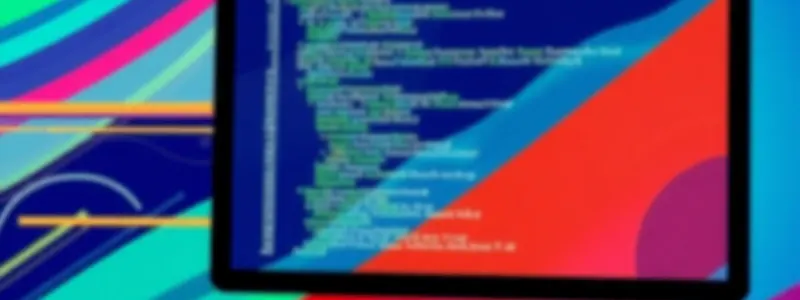Podcast
Questions and Answers
What is the primary purpose of the requirements gathering phase in software development?
What is the primary purpose of the requirements gathering phase in software development?
- Understanding the needs and expectations of users (correct)
- Testing the software for bugs and functionality
- Creating a detailed blueprint for the software's design
- Writing the actual code for the software application
Which of the following is NOT a common feature of software applications?
Which of the following is NOT a common feature of software applications?
- Scalability
- Security
- Operating system (correct)
- User interface
Which software development phase involves running tests to ensure the software functions correctly?
Which software development phase involves running tests to ensure the software functions correctly?
- Testing (correct)
- Implementation
- Design
- Deployment
What is the term for errors or flaws in software code that can lead to unexpected behavior?
What is the term for errors or flaws in software code that can lead to unexpected behavior?
Which debugging technique involves following the execution flow of a program to pinpoint errors?
Which debugging technique involves following the execution flow of a program to pinpoint errors?
Which software trend involves connecting devices to software applications, creating a network of interconnected systems?
Which software trend involves connecting devices to software applications, creating a network of interconnected systems?
What does the software feature 'usability' refer to?
What does the software feature 'usability' refer to?
Which software development trend emphasizes software designed specifically for use on mobile devices?
Which software development trend emphasizes software designed specifically for use on mobile devices?
What is the primary role of system software?
What is the primary role of system software?
Which of the following is NOT a type of system software?
Which of the following is NOT a type of system software?
Which of the following is an example of open-source software?
Which of the following is an example of open-source software?
What is the key difference between 'freeware' and 'shareware'?
What is the key difference between 'freeware' and 'shareware'?
What is 'Software as a Service' (SaaS)?
What is 'Software as a Service' (SaaS)?
Which type of software is responsible for managing files, running applications, and controlling peripherals?
Which type of software is responsible for managing files, running applications, and controlling peripherals?
Which of the following is NOT a benefit of open-source software?
Which of the following is NOT a benefit of open-source software?
What software allows users to create and deliver presentations?
What software allows users to create and deliver presentations?
Flashcards
Computer Software
Computer Software
A set of instructions, data, or programs to operate hardware.
System Software
System Software
Software that manages hardware and allows applications to function.
Operating Systems
Operating Systems
System software that manages tasks like files and applications.
Device Drivers
Device Drivers
Signup and view all the flashcards
Application Software
Application Software
Signup and view all the flashcards
Proprietary Software
Proprietary Software
Signup and view all the flashcards
Open-source Software
Open-source Software
Signup and view all the flashcards
Software as a Service (SaaS)
Software as a Service (SaaS)
Signup and view all the flashcards
Software Development Process
Software Development Process
Signup and view all the flashcards
Requirements Gathering
Requirements Gathering
Signup and view all the flashcards
User Interface (UI)
User Interface (UI)
Signup and view all the flashcards
Debugging
Debugging
Signup and view all the flashcards
Bugs
Bugs
Signup and view all the flashcards
Cloud Computing
Cloud Computing
Signup and view all the flashcards
Scalability
Scalability
Signup and view all the flashcards
Compatibility
Compatibility
Signup and view all the flashcards
Study Notes
Overview of Computer Software
- Computer software is a set of instructions, data, or programs used to operate computer hardware.
- It acts as a bridge between the user and the computer's hardware components.
- Software is broadly categorized into system software and application software.
System Software
- System software manages and controls computer hardware, allowing application software to function.
- It is essential to computer operations.
- Key system software includes:
- Operating systems (e.g., Windows, macOS, Linux): Manage files, run applications, and control hardware.
- Device drivers: Allow the operating system to communicate with specific hardware devices.
- Utility software: Provides tools for maintaining and optimizing computer performance.
- System software facilitates interaction between computer hardware and application software.
Application Software
- Application software is designed to perform specific tasks and meet user needs.
- It encompasses a diverse range of programs, tailored to various purposes.
- Examples include:
- Word processors (e.g., Microsoft Word, Google Docs): Used for creating and editing documents.
- Spreadsheet programs (e.g., Microsoft Excel, Google Sheets): Used for data analysis, calculations, and report creation.
- Presentation software (e.g., Microsoft PowerPoint, Google Slides): Used for creating presentations.
- Web browsers (e.g., Chrome, Firefox, Safari): Used to access and navigate the World Wide Web.
- Graphics software (e.g., Adobe Photoshop, GIMP): Used for creating and editing images and graphics.
- Application software empowers users to perform diverse tasks on computers.
Types of Software Licencing
- Proprietary software: The software's source code and intellectual property are protected by copyright.
- Open-source software: The source code is publicly available and often developed collaboratively.
- Users have freedom to use, study, modify, and redistribute the software.
- Often developed and maintained by a community of programmers.
- Examples include Linux, Apache HTTP Server, and many others.
- Freeware: Software that's free to use but might have restrictions or premium features available by payment.
- Shareware: Software initially offered for free but with optional purchase to unlock features or remove restrictions.
- Software as a Service (SaaS): Software accessed and run remotely on a server via a network (e.g., cloud-based applications).
- Licensing models dictate how users access and use software.
Software Development Process
- Software development is a systematic process for designing, creating, testing, and deploying software.
- Standard phases include:
- Requirements gathering: Understanding user needs and requirements.
- Design: Creating a blueprint for software architecture and functionalities.
- Implementation: Writing code based on design specifications.
- Testing: Verifying software functions as intended.
- Deployment: Releasing software to users.
- Maintenance: Ongoing support, updates, and bug fixing.
Software Features
- User interface (UI): A crucial element determining user experience and ease of interaction.
- Functionality: The core tasks and operations a software application performs.
- Usability: How user-friendly and understandable the software is.
- Performance: How quickly and efficiently the software operates.
- Security: Measures to protect data and systems from unauthorized access or threats.
- Scalability: Software's ability to handle increasing data or users.
- Reliability: Software's dependability and ability to function without failure.
- Compatibility: Software's ability to work with various operating systems, hardware, or other applications.
Software Errors and Debugging
- Bugs: Errors or flaws in software code causing unexpected behavior.
- Debugging: Identifying and fixing bugs in software.
- Debugging techniques include:
- Tracing: Following the program's execution flow to pinpoint errors.
- Testing: Running tests to identify issues and confirm functionality.
- Utilizing debugging tools: Specialized programs to pinpoint and resolve errors.
- Errors often result from logical misunderstandings, incorrect code execution or mismatched expectations.
Software Trends
- Cloud computing: Increasing adoption of cloud-based software-as-a-service models.
- Mobile computing: Software development heavily focused on mobile devices.
- Artificial intelligence (AI): Growing use of AI in software applications for tasks like machine learning and automation.
- Internet of Things (IoT): Connection of devices to software applications.
- Big data analytics: Growing use of software to process and analyze large datasets.
Studying That Suits You
Use AI to generate personalized quizzes and flashcards to suit your learning preferences.




